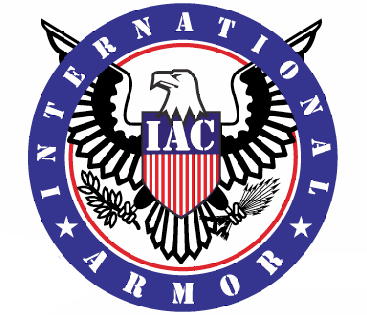INTERNATIONAL ARMOR – FREQUENTLY ASKED QUESTIONS
Q. How does body armor work?
A. When a bullet strikes a body armor panel, the fibers absorb and disperse the energy of the impact across a generalized area. Most concealable body armor is made of a number of layers. These layers assist in the energy dispersion process and help to reduce the effects of blunt trauma caused by the force of impact energy that is delivered by the projectile.
Q. How long does body armor last?
A. There are a number of factors that can influence the service life of body armor. The National Institute of Justice (NIJ) has done research (detailed in the publication entitled Old Armor Tests As Good As New and available from NLECTC at 800-248-2742 or 301-519-5060) that indicates that age is not the only determining factor. Other factors to consider include: how regularly the armor was worn; how it was cared for; whether the armor fit the wearer properly (most people lose or gain weight over a period of years); and the overall condition of the armor (do the fasteners still work properly, and so on). We encourage departments that issue body armor to have a routine inspection program for body armor, just as they would for weapons, vehicles, and other types of issued equipment.
Q. What types of materials are used to make body armor?
A. There are a number of materials used in the manufacturing of body armor. Concealable, or “soft” body armor can be made from a number of different types of woven or non woven materials. The most recognized of these is Kevlar®, which is made by DuPont. Other materials include Spectra®, which is made by AlliedSignal, and Twaron®, made by Akzo Nobel. These materials are manufactured in a variety of styles and weaves. Hard armor plates can be made from a number of materials, including metals, ceramics, and other composite materials.
Q. Which ballistic material is better?
A. Each fiber has its own advantages and disadvantages. The construction of the vest (what type or types of materials and the number of layers of each material used) and the weave of the fibers can influence the performance of the vest. To determine which is best for you, look at and try out a number of vests in the protection level you desire. When you narrow your choice to several vests, call NLECTC for the test data. In the end, it is your choice based on the factors that are most important to you.
Q. What threat level of armor should I wear?
A. First assess the type of threat you face on a daily basis. Review data from shooting incidents in your area, as well as the types of weapons being confiscated from suspects. Also factor in what type of sidearm you are carrying; Federal Bureau of Investigation (FBI) Uniform Crime Report (UCR) data indicate that approximately one in six officers killed in the line of duty were shot with their own weapon. Other considerations are: the climate in which you work, typical duty assignment, and personal preference considerations (comfort and fit). Again, the decision is ultimately yours.
Q. Which manufacturer makes the best body armor?
A. NLECTC tests body armor from many manufacturers to verify their products meet minimum performance standards necessary for police use. The test does not compare one manufacturer or their products with another. We recommend that you look at armor from a number of manufacturers. Inquire about their customer service/support, and talk with other agencies about the armor they have purchased and used. Our Consumer Product List gives a complete listing of manufacturers and models that comply with NIJ Standard 0101.03. You can also call NLECTC at 800-248-2742 or 301-519-5060 to get the most current information on models that comply with the standard.
